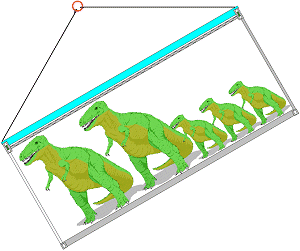 |
DON'T load with excentric load distribution! |
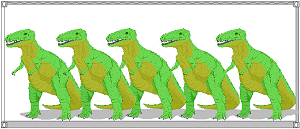 |
DO load with the center of gravity in the center of the container |
Modern container gantries with a high load-bearing capacity and multiple hoisting points can cope with a center of gravity which is off-center. Containers may, however, need to be handled by cranes or gantries with lower pulley blocks which are close together or cranes or gantries with a single hoisting point. This will hinder handling, or even render it entirely impossible. Such slanting loads must also be forbidden for security reasons. In addition, traffic regulations regarding uniform load forces etc. also play a role.
The CTU guidelines also provide the following additional rules:
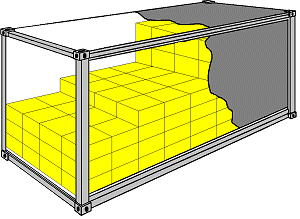 |
DON'T build up irregular layers of packages |
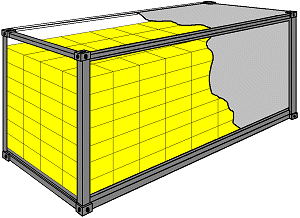 |
DO use a block stow when packing cargo |
Another recommendation relates to packaging: Material with a non-slip surface should be used to prevent packages from sliding. It has already been mentioned and explained a number of times that the construction of goods and packages plays a key role in load securing.
Finally, a very important stowage rule:
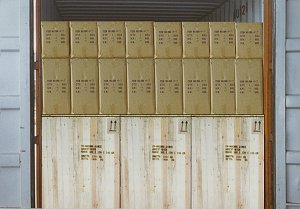 |
Light on heavy .... |
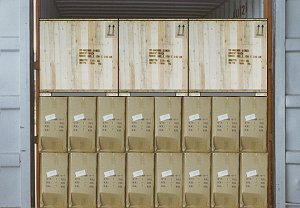 |
... not heavy on light! |
| This important basic rule is very often broken: | 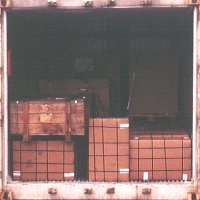 |
|
| A heavy case packed on a light carton |
||
If in an exceptional case, heavier goods must be packed on top of light goods, either construct "false decks", or support the heavy goods from beneath or take similar measures.
... and one more thing:
CAP products should be loaded in the door area.
CAP products are of special interest to the Customs authorities. Since a physical check is also made for the existence of goods of this kind, it is sensible to stow them in the door area of box containers. At the very least, they should be packed in such a way that the goods can be inspected by Customs without the need to unpack and re-pack the container.
| This was unfortunately not the case with this container: CAP products were placed in the middle of other packages. Customs staff could only check and inspect the container after it had been partially unloaded. |
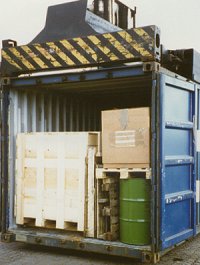 |
|
| DO NOT "conceal" CAP products | ||
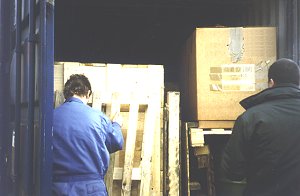 |
Additional work caused by searching for CAP products |